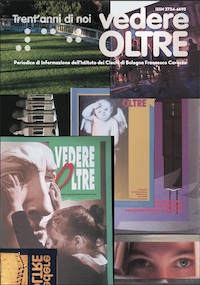Children are perfect explorers right from birth.
But they need more than sight: they need to touch, hold, handle, have physical contact with things.
For children, sight isn’t the end, but the starting point, the generator of stimuli. Not enough on its own, but needed to direct the act of firsthand knowledge to the world around them.

Raniero Regni and Leonardo Fogassi study the relationship between neuroscience and the teachings of Maria Montessori, and expand the concept presented in Montessori’s “The Child’s Mind,” according to which children’s brains evolve by means of movement. For the philosopher Regni and the neuroscientist Fogassi, “action and perception influence each other and in effect become one and the same.” And as Luigi Paladin, librarian-psychologist, says in his paper on children’s literature, “exploring is a primal impulse, like hunger and speaking.”
This is the impulse that brings so many people to take part in every edition of the national competition “Tocca a te” (“It’s your turn”), promoted by the non-profit Federazione Nazionale delle Istituzioni pro Ciechi, to explore the production of tactile books, to experience writing and reading not only visually but also tactually.
The “Tocca a te” competition invites young authors, young artists, teachers, and parents to create a book to be read with the hands.
Not just prototypes of tactile books, but multi-material explorations that investigate the possibility of narrating and reading by means of matter.
Each page of the tactile book becomes a symbolic cognitive space, limited by the size of the page but always an active space for our hands that read.

It’s a productive space, for the reader and for the designer.
A space for understanding how to read not just illustrations of the world but for learning how to explore the world itself, with your whole body and an open mind. This is true for everyone: We read not just for the fun of reading, but also to receive new stimuli in order to understand the world. Therefore, the jury isn’t looking for the most beautiful book, the one that best expresses haptic reading, but instead tactile books that can stimulate and inspire the visually impaired in their search for knowledge.
The following link to the page of the Federation’s website presents the winners and explanations: https://libritattili.prociechi.it/concorsi/concorso-nazionale-tocca-a-te/





.png)